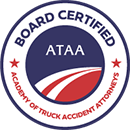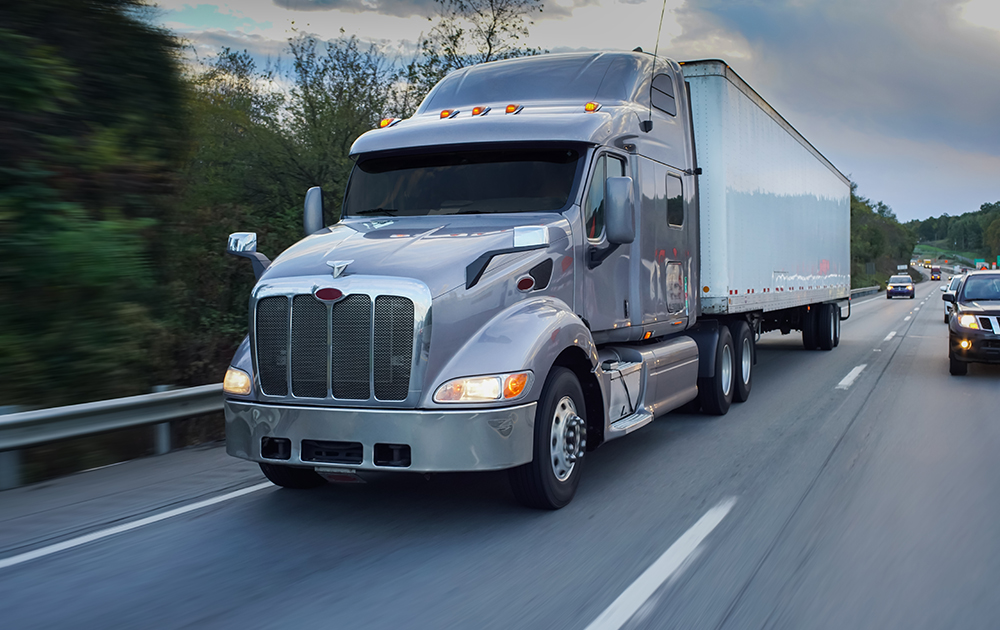What Are the Best Ways To Pass Tractor-Trailers Safely?
As you travel along interstates, state and U.S. routes, and highways, you’re bound to encounter tractor-trailers en route carrying goods to and fro. While, in many cases, you’ll find that truckers are traveling at or above the posted speed limit, that’s not necessarily the case with some.
Sometimes it’s not safe for truckers to drive fast, and you may feel the urge to pass them. For many, it can feel daunting the prospect of passing such a large and heavy vehicle. You may worry that a trucker won’t see you and collide with your vehicle.
Below, we highlight the best ways to pass tractor-trailers safely.
Steer Clear of Truck “No-Zones”
The National Highway Traffic Safety Administration (NHTSA) contends that big rigs have “no-zones,” which the federal agency describes as certain areas around an 18-wheeler that you want to avoid to minimize your chances of having a crash with them. Those danger zones on a semi-truck are:
- The 20 feet that lie directly in front of a truck
- The 30 feet right behind a tractor-trailer
- Two lanes’ width on the diagonal from the rear right portion of the trailer
- One lane’s width on the diagonal extending from the front portion of the cab
Articulating where these no-zones lie with words can be challenging, and the Highway Traffic Safety Administration (NHTSA) understands that. The NHTSA The Facts publication shows where they lie in a graphical format.
While the likelihood of passing without coming into these zones may seem impossible if you’re cognizant of them and the fact that not only might a tractor-trailer not see you in them, but that coming into them might not give you or the trucker ample space to brake to avoid a crash, if either of you encounters a road hazard, is a reality and thus why the NHTSA recommends steering clear of these no-zones when traveling alongside or passing large trucks.
Maintain a Steady Speed as You Pass the Truck
Given how large trucks are, their blind spots project a lot further forward, behind, and out to the sides than passenger cars do. That is why you’ll often see stickers warning car drivers to be aware that if you can’t see yourself in the 18-wheeler’s mirrors, then they can’t see you.
The point of reminding you of all this is that when passing a big rig, most drivers are inevitably going to come into a trucker’s blind zone at some point. The key is that you don’t want that to happen for too long that a trucker forgets you’re there.
So, how do you prevent that from happening? By maintaining a steady speed when passing.
The goal is for you to spend the least amount of time possible in those blind spots. And since many states allow motorists to drive slightly over the posted speed limit when overtaking other vehicles, you might want to do so if laws in your jurisdiction permit you to do so.
And, doing so isn’t permissible or something you feel comfortable doing out of fear of losing control of your vehicle; you should, at the very least, maintain a steady speed, and specifically one that aligns with the posted speed limit, is key.
A steady speed will help a trucker, who might notice you drop out of sight at least temporarily, gauge whether you’re still around or not. Let us explain.
For the purposes of this example, let’s assume both the tractor-trailer operator and passenger car driver are traveling at the posted speed limit. The average passenger car is around 14 feet, and the typical 18-wheeler is around 72 feet.
As an example, a truck driver might have noticed you entering one of their rear blind spots.
Given that the standard semi-truck is nearly four times the length of a standard car, a trucker might reasonably assume a vehicle also traveling at a consistent speed should reappear or pass within, say, five or six car lengths or an equivalent time frame.
If you don’t, they may assume that you’re no longer there and feel confident to make maneuvers, including changing lanes, potentially resulting in a crash.
One of the common reasons wrecks occur in these situations is because motorists slow down when riding alongside trucks as opposed to maintaining a consistent speed or attempting to overpower them to remove themselves from their blind zones as quickly as possible, thus significantly reducing their crash risk.
Give a Trucker Ample Space When Pulling Ahead of Them
Motorists tend not to realize that semi-trucks need what the FMCSA describes as “the length of up to two football fields to safely stop.”
Given how a single football field is around 100 yards or 300 feet, this means unless you give them at least 200 yards or 600 feet, they might not have enough time to avoid crashing into the rear of your vehicle if you suddenly stop ahead of them or even just slow down after you cut in close.
The federal agency warns that other factors, such as the following, may increase the needed distance to stop, though:
- Inclement weather, like icy or wet roads
- Speed, especially if it exceeds the posted speed limit
- Road conditions, perhaps there is debris like gravel or oil slicks present
- The weight of the load contained in the trailer
Not being aware of a truck’s braking distance often gives way to preventable crashes between these large vehicles and passenger cars. Thus, the best thing that you can do to avoid one yourself is to pull ahead only once you’re a significant distance ahead of them so that it’s safe to do so.
Always Pass on the Left
Even though it’s not illegal to pass on the right in most jurisdictions, it’s standard practice and expected for motorists to do so on the left, as that’s where the driver’s mirror is located.
The key when sharing the road and specifically passing any vehicle, but especially trucks, is to maintain visibility. There’s less of a chance of them cutting in too close in front of you or sideswiping your car when they can see you.
Thus, following an expected protocol or best practices, passing on the left included, reduces the element of “chance” and instead makes things more predictable, minimizing the risk of a crash.
Where To Turn if a Crash Occurred When Passing a Truck
The tips provided above are what we believe are some of the most critical ones to keep you and truckers from having close calls or collisions with each other.
However, as you’re aware, anomalies can occur that don’t fit the mold of your standard accident, and thus, the strategies provided above may not be effective in keeping you safe.
Our team at Trucking Injury Law Group has dedicated our careers to handling accidents involving tractor-trailers only. Why is that? We’ve made that decision because there are so many complexities involved in compiling and analyzing evidence necessary to determine fault and, thus, liability in these cases. It’s necessary to be experts in these areas.
The extensive experience we’ve had in handling these cases has allowed us to fine-tune our ability to build strong cases that give us a better chance of securing maximum compensation for our clients.
We want to do the same for you if you’ve been hurt. Our work together begins with a free consultation.
So, contact us online to tell us about your crash and the injuries it left you with or how it caused your loved one’s passing, and we’ll advise you of your legal options and how we may be able to help you pursue them.






